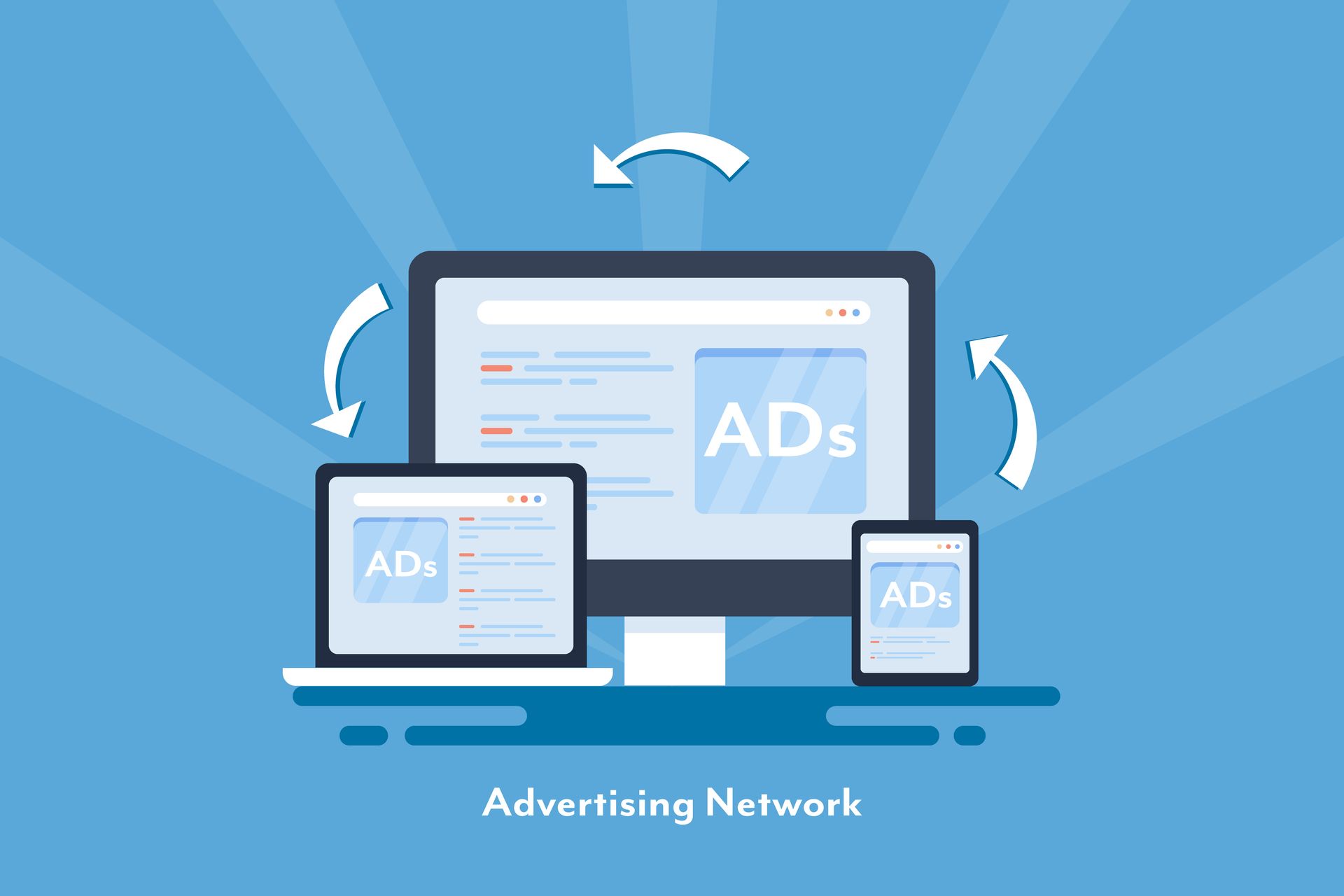Unlocking the Secrets of a Good ROAS: Maximising Advertising Success
Unlocking the Secrets of a Good ROAS: Maximising Advertising Success
Unlocking the Secrets of a Good ROAS: Maximising Advertising Success
In the fast-paced world of digital marketing, Return on Advertising Spend (ROAS) is a critical metric that can make or break your campaigns. But what exactly does it take to achieve a good ROAS? How can you maximise your advertising success and ensure that every dollar you invest brings in a significant return?
In this article, we delve deep into the secrets of a good ROAS and share strategies that can help you skyrocket your advertising success. Whether you are a seasoned marketer or just starting out, these insights will empower you to optimise your campaigns and drive maximum results.
From understanding the importance of audience targeting and ad placement, to crafting compelling and persuasive copy, we cover it all. Get ready to unlock the proven tactics that top marketers use to achieve an exceptional ROAS and take your advertising game to a whole new level.
Don't let your advertising dollars go to waste. Join us as we reveal the secrets behind a good ROAS and show you how to maximise the success of your advertising efforts. Get ready to take your ROI to new heights!
Understanding ROAS (Return on Advertising Spend)
ROAS, or Return on Advertising Spend, is a crucial metric that helps businesses and marketers evaluate the effectiveness of their advertising efforts. It measures the revenue generated for every dollar spent on advertising. In other words, ROAS tells you how much money you're making for every dollar you invest in your advertising campaigns.
Understanding ROAS is essential because it allows you to make informed decisions about your marketing strategy. By analysing your ROAS, you can identify which advertising channels, campaigns, or even individual ads are performing well and generating the highest returns. This information can then be used to allocate your advertising budget more efficiently, redirect resources to the most successful initiatives, and continuously improve the overall effectiveness of your marketing efforts.
ROAS is particularly important in the digital age, where the vast array of advertising platforms and targeting options can make it challenging to determine the true impact of your marketing investments. By closely monitoring your ROAS, you can gain valuable insights into the behaviour and preferences of your target audience, allowing you to refine your messaging, optimise your ad placements, and ultimately drive more revenue and growth for your business.
The importance of ROAS in advertising
ROAS is a critical metric for any business or marketer looking to maximise the return on their advertising investments. It provides a clear and quantifiable way to measure the success of your advertising campaigns, allowing you to make data-driven decisions and optimise your marketing strategies for better results.
One of the primary reasons ROAS is so important is that it helps you understand the true profitability of your advertising efforts. By calculating the revenue generated for every dollar spent on advertising, you can determine which campaigns are generating the highest returns and which ones may be costing you more than they're worth. This information is invaluable in helping you allocate your marketing budget more effectively and focus your resources on the most profitable initiatives.
Moreover, ROAS is a key metric for assessing the overall efficiency and effectiveness of your advertising campaigns. It allows you to compare the performance of different ad channels, targeting strategies, and creative approaches, enabling you to identify the most successful tactics and replicate them across your marketing efforts. By continuously optimising your ROAS, you can ensure that your advertising dollars are being put to the best possible use and generating the maximum return on your investment.
-
Factors affecting ROAS
ROAS is influenced by a variety of factors, each of which can have a significant impact on the overall performance of your advertising campaigns. Understanding these factors is crucial in order to identify areas for improvement and optimise your ROAS effectively.
One of the most important factors affecting ROAS is the quality and relevance of your target audience. If you're not reaching the right people with your ads, your ROAS is likely to suffer. Factors such as demographic targeting, behavioural targeting, and audience segmentation can all play a crucial role in ensuring that your ads are being served to the most receptive and engaged users.
Another key factor is the quality and persuasiveness of your ad creative.
The images, videos, and copy used in your ads can have a significant impact on their ability to capture attention, convey your message, and ultimately drive conversions. Factors like ad design, messaging, and call-to-action can all influence your ROAS.
The placement and timing of your ads can also affect ROAS. Factors such as ad placement on web pages or social media platforms, the time of day or day of the week when your ads are served, and the overall competitive landscape can all influence the performance of your advertising campaigns.
Finally, the quality of your landing pages and the overall user experience can also play a role in ROAS. If users who click on your ads are not finding what they're looking for or are encountering a poor user experience, it can negatively impact your conversion rates and, ultimately, your ROAS.
-
Calculating and measuring ROAS
Calculating and measuring ROAS is a critical step in optimising your advertising efforts and ensuring that your marketing investments are generating the desired returns.
By understanding the formula for ROAS and how to interpret the data, you can make more informed decisions about where to allocate your advertising budget and how to improve the performance of your campaigns.
The basic formula for calculating ROAS is:
ROAS = Revenue / Advertising Spend
This simple equation tells you how much revenue you're generating for every dollar you spend on advertising. For example, if your ROAS is 4.0, it means that for every $1 you spend on advertising, you're generating $4 in revenue.
To calculate your ROAS, you'll need to track the revenue generated by your advertising campaigns and the corresponding advertising spend. This data can be collected from a variety of sources, including your e-commerce platform, ad platform analytics, and customer relationship management (CRM) software.
Once you have the necessary data, you can calculate your ROAS for individual campaigns, ad channels, or even specific ad creatives. This information can then be used to identify the most profitable advertising initiatives and make data-driven decisions about where to focus your efforts and resources.
It's important to note that ROAS is not the only metric to consider when evaluating the success of your advertising campaigns. Other important metrics, such as click-through rate (CTR), conversion rate, and customer lifetime value (CLV), can also provide valuable insights into the overall performance and effectiveness of your marketing efforts.
By analysing ROAS in conjunction with these other metrics, you can gain a more comprehensive understanding of your advertising success and make more informed decisions about how to optimise your campaigns for maximum return.
-
Strategies to maximise ROAS
Maximising your ROAS (Return on Advertising Spend) is crucial for the success and profitability of your advertising campaigns. By implementing effective strategies to optimise your ROAS, you can ensure that every dollar you invest in advertising is generating the highest possible return. Here are some proven strategies to help you maximise your ROAS:
1. Audience Targeting: One of the most important factors in achieving a good ROAS is targeting the right audience. Use data-driven audience segmentation and targeting techniques to ensure that your ads are being served to the most relevant and engaged users. This could involve leveraging demographic, behavioural, or interest-based targeting options, as well as custom audience creation and lookalike targeting.
2. Ad Optimisation: Continuously optimise your ad creatives, messaging, and targeting to improve their performance. Test different ad formats, images, videos, and copy to determine what resonates best with your target audience. Analyse the data to identify the top-performing ads and replicate their success across your campaigns.
3. Bid Optimisation: Carefully manage your ad bids to ensure that you're not overpaying for clicks or impressions. Use automated bid optimisation tools or manual adjustments to find the sweet spot between cost and performance, and continuously monitor and adjust your bids based on campaign performance.
4. Landing Page Optimisation: Ensure that your landing pages are optimised for conversion by providing a seamless and engaging user experience. Test different page layouts, calls-to-action, and content to identify the most effective strategies for driving conversions and improving your ROAS.
5. Conversion Rate Optimisation: Continuously work to improve your conversion rates by identifying and addressing any bottlenecks or friction points in the customer journey. This could involve A/B testing different checkout processes, optimising form fields, or enhancing the overall user experience.
6. Attribution Modeling: Implement a robust attribution model to accurately track and measure the impact of your advertising campaigns on your overall revenue. This will help you identify the most effective touchpoints and allocate your budget accordingly, leading to a higher ROAS.
7. Remarketing and Retargeting: Leverage remarketing and retargeting strategies to reconnect with users who have already interacted with your brand or products. This can be an effective way to nurture leads and drive additional conversions, ultimately boosting your ROAS.
By implementing these strategies and continuously monitoring and optimising your ROAS, you can maximise the return on your advertising investments and drive sustainable growth for your business.
-
Targeting the right audience for better ROAS
Targeting the right audience is one of the most critical factors in achieving a good ROAS (Return on Advertising Spend). If your ads are not reaching the people who are most likely to convert, your advertising efforts will be less effective, and your ROAS will suffer.
To target the right audience, you need to have a deep understanding of your customer base and their behaviours, preferences, and pain points. This can involve conducting market research, analysing customer data, and creating detailed buyer personas. By understanding your target audience on a granular level, you can create more personalised and relevant ad campaigns that resonate with them.
One effective strategy for targeting the right audience is to use data-driven audience segmentation. This involves dividing your target market into smaller, more specific groups based on factors such as demographics, interests, behaviours, and purchase history. By targeting these segmented audiences with tailored messaging and offers, you can significantly improve the effectiveness of your advertising campaigns and drive a higher ROAS.
Another key tactic is to leverage audience targeting options offered by various advertising platforms, such as Google Ads, Facebook Ads, and LinkedIn Ads. These platforms provide a wealth of targeting options, including location, age, gender, interests, behaviours, and even custom audiences based on your own customer data. By utilising these targeting capabilities, you can ensure that your ads are being served to the most relevant and engaged users, leading to a higher ROAS.
It's also important to continuously test and refine your audience targeting strategies. Monitor the performance of your campaigns and make adjustments to your targeting parameters as needed. This may involve experimenting with new audience segments, testing different targeting criteria, or even expanding your reach to new, untapped markets.
By focusing on targeting the right audience, you can significantly improve the effectiveness of your advertising campaigns and drive a higher ROAS. This, in turn, will allow you to allocate your marketing budget more efficiently, optimise your advertising strategies, and ultimately achieve greater success in your overall marketing efforts.
-
Optimising ad campaigns for improved ROAS
Optimising your ad campaigns is crucial for improving your ROAS (Return on Advertising Spend) and maximising the effectiveness of your advertising investments. By continuously refining and testing your ad creatives, targeting, and bidding strategies, you can ensure that your campaigns are delivering the highest possible return on your marketing spend.
One of the key strategies for optimising ad campaigns is to focus on creating high-performing ad creatives. This involves testing different visual elements, such as images, videos, and graphics, as well as crafting compelling and persuasive ad copy.
Experiment with various messaging, calls-to-action, and formatting to determine what resonates best with your target audience and drives the most conversions.
Another important aspect of ad campaign optimisation is audience targeting. Utilise the advanced targeting capabilities offered by advertising platforms to reach the most relevant and engaged users. This may involve leveraging demographic, behavioural, or interest-based targeting, as well as creating custom audience segments based on your customer data. Continuously test and refine your targeting strategies to ensure that your ads are being served to the right people.
Bid optimisation is also crucial for improving ROAS. Carefully manage your ad bids to find the sweet spot between cost and performance. Use automated bidding strategies or manual adjustments to ensure that you're not overpaying for clicks or impressions, while still maintaining a high level of visibility and engagement. Monitor your campaign performance and adjust your bids accordingly to maximise your ROAS.
Another important aspect of ad campaign optimisation is landing page optimisation. Ensure that your landing pages are providing a seamless and engaging user experience that encourages conversions. Test different page layouts, calls-to-action, and content to identify the most effective strategies for driving sales or lead generation. By optimising your landing pages, you can improve your overall conversion rates and boost your ROAS.
Finally, it's essential to continuously track and analyse the performance of your ad campaigns. Use data-driven insights to identify the most effective tactics, channels, and strategies, and replicate them across your marketing efforts. Regularly review your ROAS metrics, make adjustments as needed, and continuously refine your approach to ensure that your advertising investments are generating the highest possible returns.
By implementing these optimisation strategies, you can significantly improve the performance of your ad campaigns and drive a higher ROAS, ultimately leading to greater success and profitability for your business.
-
Tracking and analysing ROAS data
Tracking and analysing ROAS (Return on Advertising Spend) data is crucial for understanding the effectiveness of your advertising campaigns and making informed decisions about your marketing strategy. By closely monitoring your ROAS metrics, you can identify the most profitable initiatives, optimise your advertising efforts, and maximise the return on your marketing investments.
To effectively track and analyse your ROAS data, you'll need to have a robust system in place for collecting and organising your advertising performance data. This may involve integrating your various advertising platforms, such as Google Ads, Facebook Ads, and LinkedIn Ads, with your web analytics tools, customer relationship management (CRM) software, and e-commerce platforms. By consolidating your data from multiple sources, you can gain a comprehensive view of your advertising performance and the impact it's having on your overall business objectives.
Once you have your ROAS data in place, it's important to regularly review and analyse the metrics. This may involve calculating your ROAS at the campaign, ad group, or even individual ad level, as well as tracking other key performance indicators (KPIs) such as click-through rate (CTR), conversion rate, and customer lifetime value (CLV). By analysing these metrics, you can identify the most successful advertising initiatives, understand the factors that are driving their performance, and make data-driven decisions about where to allocate your marketing budget.
Another important aspect of ROAS data analysis is identifying trends and patterns over time. By tracking your ROAS data on a regular basis, you can spot emerging trends, detect seasonal fluctuations, and understand how your advertising performance is evolving. This information can be invaluable in informing your long-term marketing strategies and adapting your tactics to changing market conditions.
To further enhance your ROAS data analysis, consider leveraging advanced analytics tools and techniques, such as machine learning algorithms, predictive modeling, and attribution modeling. These sophisticated approaches can help you uncover deeper insights, identify new opportunities, and make more accurate predictions about the future performance of your advertising campaigns.
By consistently tracking and analysing your ROAS data, you can gain a clear understanding of the true impact of your advertising investments and make informed decisions that drive greater success and profitability for your business.
Remember, the key to maximising your ROAS is to continuously monitor, analyse, and optimise your advertising efforts based on the data-driven insights you uncover.
-
Tools and software for ROAS optimisation
In the ever-evolving world of digital marketing, there are a variety of tools and software solutions available to help businesses and marketers optimise their ROAS (Return on Advertising Spend) and maximise the effectiveness of their advertising campaigns. These tools can provide valuable insights, automate tedious tasks, and enable data-driven decision-making to improve your overall advertising performance.
One of the most widely used tools for ROAS optimisation is Google Analytics. This powerful web analytics platform can provide detailed data on the performance of your advertising campaigns, including traffic sources, conversion rates, and revenue attribution. By integrating Google Analytics with your advertising platforms, such as Google Ads, you can gain a comprehensive understanding of how your ads are driving conversions and revenue, allowing you to make more informed decisions about your marketing strategy.
Another essential tool for ROAS optimisation is your advertising platform's own analytics and reporting capabilities. Whether you're using Google Ads, Facebook Ads, LinkedIn Ads, or any other advertising platform, these tools can provide granular insights into the performance of your campaigns, including impressions, clicks, conversions, and, of course, ROAS. By leveraging these built-in analytics, you can identify the most successful ad creatives, targeting strategies, and bidding approaches, and then replicate them across your advertising efforts.
In addition to these platform-specific tools, there are also a variety of third-party software solutions designed to enhance ROAS optimisation. These may include tools for ad creative testing, audience segmentation, bid management, and attribution modeling. Some popular examples include Optmysr, Adstage, and Supermetrics, which can integrate with multiple advertising platforms and provide advanced analytics and optimisation capabilities.
Another important consideration is the use of customer relationship management (CRM) software and marketing automation platforms. By integrating your CRM data with your advertising performance metrics, you can gain a more holistic understanding of the customer journey and the impact of your advertising efforts on lead generation, sales, and customer retention. Tools like HubSpot, Salesforce, and Marketo can provide valuable insights to help you optimise your ROAS and align your advertising strategies with your overall business objectives.
Finally, don't overlook the importance of data visualisation and reporting tools. Solutions like Power BI, Tableau, and Google Data Studio can help you transform your ROAS data into clear, actionable insights through interactive dashboards and custom reports. By presenting your advertising performance data in a visually compelling and easy-to-understand format, you can make more informed decisions and communicate the impact of your marketing efforts to key stakeholders.
By leveraging the right tools and software solutions, you can unlock the secrets to a successful ROAS and drive sustainable growth for your business. Remember to continuously explore new technologies, experiment with different approaches, and stay up-to-date with the latest trends and best practices in ROAS optimisation.

Conclusion: Unlocking the secrets to a successful ROAS
In the dynamic world of digital marketing, ROAS is the key to understanding the effectiveness of your marketing efforts. Following the above formula allows you to use ROAS to drive more successful ads, and optimum results for your money.
 Rating
Rating

Let's have a coffee
We’d love to hear from you! Just choose the most convenient method and we’ll get back to you as soon as we can.
Tel: 01244 629 523
Email: hello@H10marketing.co.uk
© Copyright 2024 H10 Marketing Ltd. All Rights Reserved.
Company Registration No: 11030469. VAT No. 427333211. Registered Office: Attention: Sarah Hawkins, 1 Old Marsh Farm Barns Business Centre, Old Marsh Farm Road, Sealand, Deeside, Flintshire, CH5 2LY, United Kingdom.












